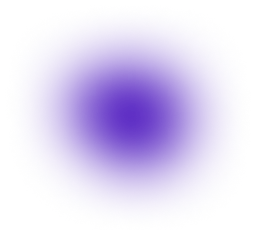
Hosting on BigFile: The Future of Web Infrastructure
Welcome to the deep dive into hosting on the BigFile network. Traditional web hosting relies on centralized servers, creating single points of failure, exposing applications to censorship, and incurring ongoing monthly costs. BigFile completely revolutionizes this model.
By leveraging our DePIN (Decentralized Physical Infrastructure Network) for storage, developers can deploy their entire web application—from frontend assets like HTML, CSS, and JavaScript to backend data and user-generated content—directly onto a global, community-owned network. This is not just hosting; it's creating a permanent, unstoppable digital presence.
1. How is BigFile Different from Traditional Hosting?
| Feature | Traditional Hosting (e.g., AWS, Vercel) | BigFile Decentralized Hosting |
|---|---|---|
| Server Control | Controlled by a single corporation. | Powered by a global, independent network of nodes. |
| Censorship | Vulnerable to de-platforming and takedowns. | Highly resistant to censorship. |
| Availability | A server outage can take your site offline. | No single point of failure; high resilience. |
| Data Permanence | Data is lost if you stop paying. | "Pay-as-you-go" for permanent storage. |
| Cost Model | Recurring monthly subscription fees. | One-time or usage-based payments in BIG. |
2. The Technical Workflow: From Local Files to a Global dApp
Deploying a website or dApp on BigFile is a straightforward process handled by our SDKs and command-line tools (CLI). Here's what happens behind the scenes:
Step 1: Client-Side Encryption & Sharding
- When you decide to deploy your application's build files (e.g., your
index.htmland assets), the BigFile client software first encrypts them locally on your machine. - It then splits the encrypted data into multiple, redundant fragments, or "shards," using a technique called erasure coding. This ensures that even if some provider nodes go offline, your data can still be fully reconstructed.
Step 2: Distribution to the DePIN
- These encrypted shards are then distributed across our global network of independent Storage Providers.
- A root hash, representing the unique fingerprint of your data, is anchored to our BigFile L2 Chain. This serves as the permanent, immutable pointer to your application's files.
Step 3: Content Retrieval
- When a user visits your BigFile-hosted website (e.g., via a decentralized gateway or a custom domain), their browser requests the root hash from the L2.
- The protocol then retrieves the necessary encrypted shards from the nearest and fastest provider nodes.
- The data is reassembled and decrypted directly in the user's browser, ensuring end-to-end privacy and security.
3. Key Benefits for Developers
Eliminate Server Management: Say goodbye to configuring servers, managing databases, and worrying about uptime. Deploy your application once, and let the decentralized network handle the rest. BigFile applications are "launch once, run forever."
True Censorship Resistance: Because your dApp is hosted on a distributed network of thousands of nodes worldwide, no single government or corporation can take it offline. This is the foundation for true free speech and unstoppable applications.
Radically Lower Costs: Our DePIN model is inherently more cost-effective than maintaining expensive, centralized data centers. By paying only for the storage you use, you can dramatically reduce your infrastructure costs, especially for applications with high data demands.
Programmable & Dynamic Content: The BigFile L2 is not just a ledger; it's a smart contract platform. This allows for powerful use cases like:
- Websites whose content can be updated via a DAO vote.
- Dynamic NFTs where the image is permanently stored on BigFile but can be altered by a smart contract.
- User-generated content platforms where every post is a permanent, user-owned piece of data.
BigFile provides the tools to build the truly decentralized, resilient, and user-owned web applications of the future.
